Effectiveness of Runoff Control Legislation and Active, Beautiful, Clean (ABC) Waters Design Features in Singapore
Abstract
:1. Introduction
2. Methodology
2.1. Hydrological Response Regime Map for Singapore
2.2. Effectiveness of ABC Features in Reducing C Value
3. Results
4. Discussion
5. Conclusions
Acknowledgments
Author Contributions
Conflicts of Interest
Appendix A
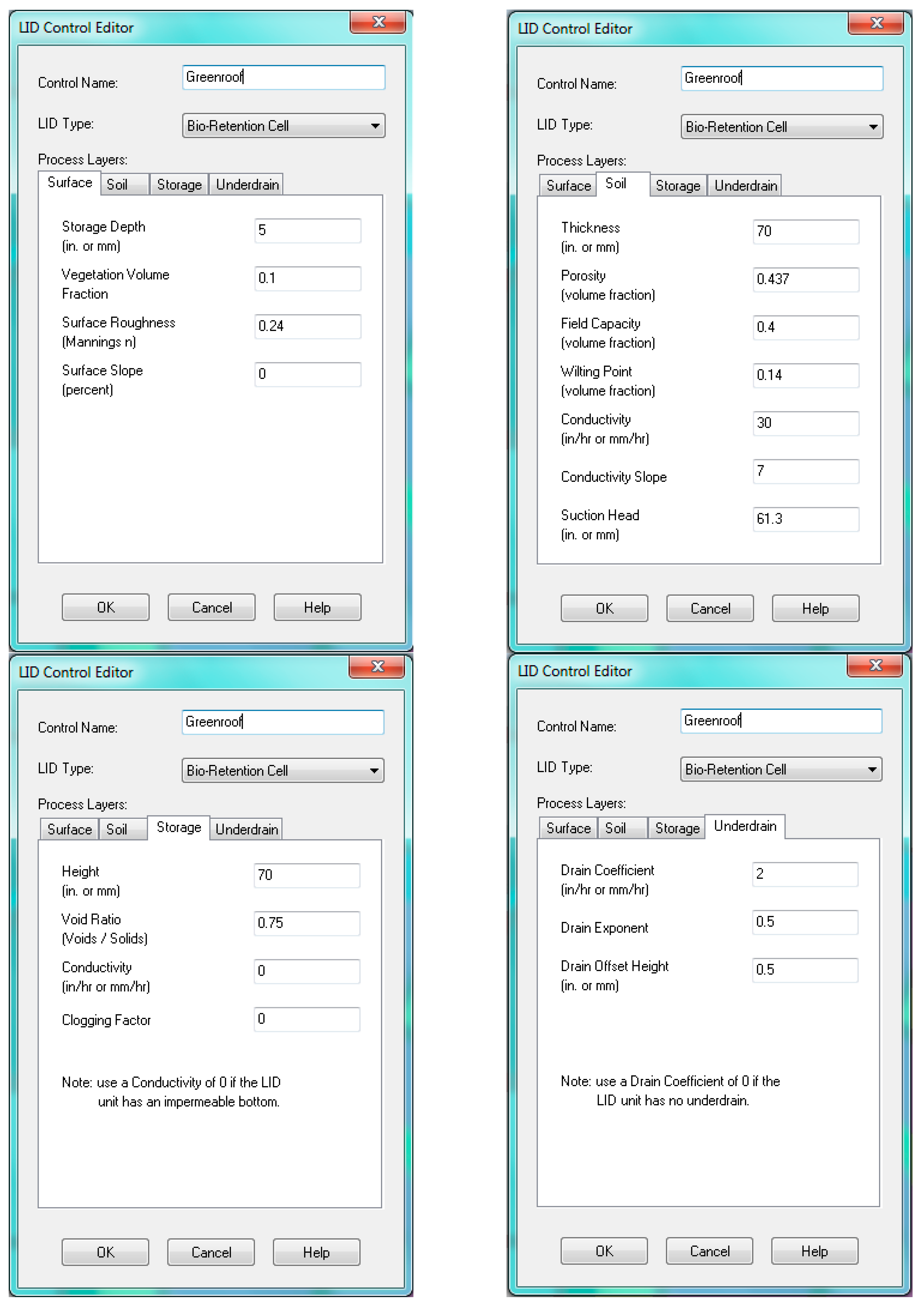
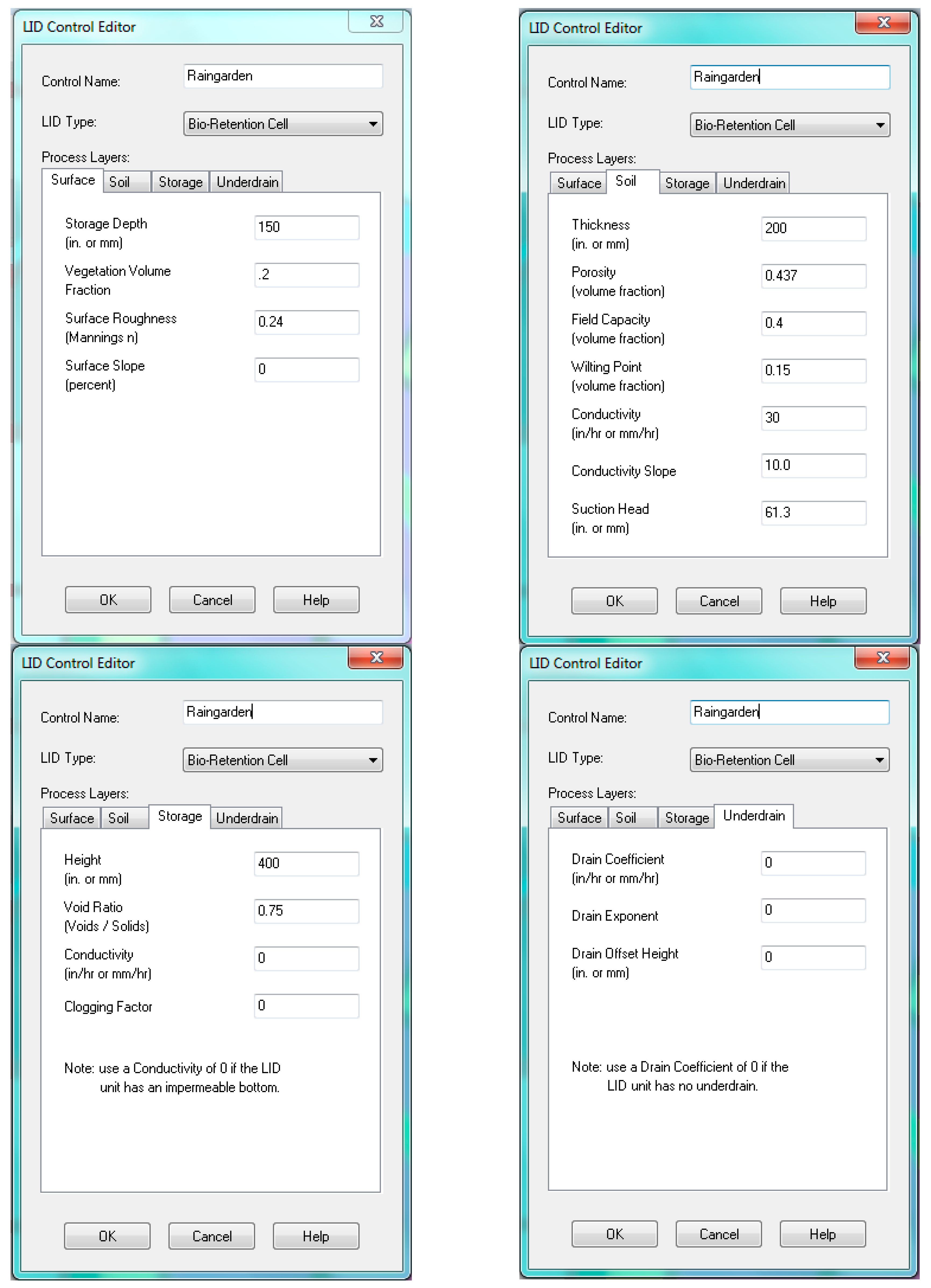

References
- Dietz, M.E. Low impact development practices: A review of current research and recommendations for future directions. Water Air Soil Pollut. 2007, 186, 351–363. [Google Scholar] [CrossRef]
- Chinh, D.; Dung, N.; Gain, A.; Kreibich, H. Flood loss models and risk analysis for private households in Can Tho City, Vietnam. Water 2017, 9, 313. [Google Scholar] [CrossRef]
- Radhakrishnan, M.; Pathirana, A.; Ashley, R.; Zevenbergen, C. Structuring climate adaptation through multiple perspectives: Framework and case study on flood risk management. Water 2017, 9, 129. [Google Scholar] [CrossRef]
- European Environment Agency. Urban Adaptation to Climate Change in Europe: Transforming Cities in a Changing Climate; European Environment Agency: Copenhagen, Denmark, 2016; p. 135. [Google Scholar]
- City of Melbourne. Resilient Melbourne; City of Melbourne: Melbourne, Australian, 2016. [Google Scholar]
- HM Government. National Flood Resilience Review. Crown Copyright: 2016. Available online: https://www.gov.uk/government/publications/national-flood-resilience-review (accessed on 16 April 2017).
- Zhang, S.X.; Babovic, V. A real options approach to the design and architecture of water supply systems using innovative water technologies under uncertainty. J. Hydroinform. 2012, 14, 13–29. [Google Scholar] [CrossRef]
- PUB Singapore’s National Water Agency. Code of Practice on Surface Water Drainage (Sixth Edition-December 2011, Addendum No. 1 Junuary 2013); Public Utilties Board: Singapore, 7 June 2017. Available online: https://www.pub.gov.sg/Documents/COP_Final.pdf (accessed on 7 June 2017).
- PUB Singapore’s National Water Agency. Active Beautiful Clean Waters Design Guidelines; Board, P.U., Ed.; Public Utilties Board: Singapore, 2014.
- Fletcher, T.D.; Shuster, W.; Hunt, W.F.; Ashley, R.; Butler, D.; Arthur, S.; Trowsdale, S.; Barraud, S.; Semadeni-Davies, A.; Bertrand-Krajewski, J.-L.; et al. SUDS, LID, BMPs, WSUD and more—The evolution and application of terminology surrounding urban drainage. Urban Water J. 2015, 12, 525–542. [Google Scholar] [CrossRef]
- Pathirana, A.; Denekew, H.B.; Veerbeek, W.; Zevenbergen, C.; Banda, A.T. Impact of urban growth-driven landuse change on microclimate and extreme precipitation—A sensitivity study. Atmos. Res. 2014, 138, 59–72. [Google Scholar] [CrossRef]
- PUB Singapore’s national water agency. Report on Key Conclusions and Recommendations of the Expert Panel on Drainage Design and Flood Protection Measures; PUB Singapore’s National Water Agency, Ed.; PUB Singapore’s National Water Agency: Singapore, 2012.
- Urban Drainage and Flood Control District. Urban Storm Drainage Criteria Manual; Urban Drainage and Flood Control District, Ed.; Urban Drainage and Flood Control District (UDFCD): Denver, CO, USA, 2016. [Google Scholar]
- Nicklow, J.W.; Boulos, P.F.; Muleta, M.K. Comprehensive Urban Hydrologic Modeling Handbook for Engineers and Planners; MWH Soft, Inc. Publ.: Pasadena, CA, USA, 2006. [Google Scholar]
- Voogt, J.A. Urban heat islands: Hotter cities. Action Biosci. 2004. Available online: http://www.actionbioscience.org/environment/voogt.html?newwindow=true (accessed on 12 August 2017).
- United States Department of Agriculture. Urban Hydrology for Small Watersheds TR-55. In US Soil Conservation Service. Technical Release; Conservation Engineering Division, Natural Resource Conservation Service, United States Department of Agriculture: Washigton, DC, USA, 1986. [Google Scholar]
- National Environment Agency. Weather Statistics, 2014. Available online: http://www.nea.gov.sg/weather-climate/climate/historical-daily-records (accessed on 2 October 2014).
- Environmental Protection Agency, United States. Storm Water Management Model (SWMM). 2014. Available online: http://www2.epa.gov/water-research/storm-water-management-model-swmm (accessed on 3 March 2015).
- Rossman, L.A.; Huber, W.C. Stormwater Management model—Reference Manual—Volume I Hydrology (Revised); USEPA Agency, Ed.; USEPA: Cincinnati, OH, USA, 2016.
- Housing and Development Board of Singapore. HDB Homes of the Future: Green & Sustainable. 2014. Available online: http://www20.hdb.gov.sg/fi10/fi10296p.nsf/PressReleases/18994D97FB6D475F48257D4E0023DA3F?OpenDocument (accessed on 30 June 2017).
- Urban Redevelopment Authority of Singapore. Master Plan—Eastern Region. 2014. Available online: https://www.ura.gov.sg/uol/master-plan/View-Master-Plan/master-plan-2014/master-plan/Regional-highlights/east-region/east-region (accessed on 30 June 2017).
- Housing and Development Board of Singapore. Unveiling the Masterplan for Tengah: At Home with Nature. 2016. Available online: http://www.hdb.gov.sg/cs/infoweb/press-releases/corporate-pr-unveiling-the-masterplan-for-tengah-08092016 (accessed on 30 June 2017).
- Liu, Y.B.; Gebremeskel, S.; de Smedt, F.; Hoffmann, L.; Pfister, L. Predicting storm runoff from different land-use classes using a geographical information system-based distributed model. Hydrol. Process. 2006, 20, 533–548. [Google Scholar] [CrossRef]
- Housing and Development Board of Singapore. HDB Greenprint Brings Sustainable & Green Living to 5800 Households in Teck Ghee. 2015. Available online: http://www.hdb.gov.sg/cs/infoweb/press-releases/hdb-greenprint-brings-sustainable-and-green-living (accessed on 30 June 2017).
- Housing and Development Board of Singapore. Greenery. Undated. Available online: http://www.hdb.gov.sg/cs/infoweb/about-us/our-role/smart-and-sustainable-living/hdb-greenprint/greenery (accessed on 30 June 2017).
- Housing and Development Board of Singapore. Yuhua Residents First to Benefit from Sustainable Features with Completion of HDB Greenprint. 2015. Available online: http://www.hdb.gov.sg/cs/infoweb/press-release/yuhua-residents-first-to-benefit-from-sustainable-features (accessed on 30 June 2017).
- Greenroofs.com. Casa Clementi. 2012. Available online: http://www.greenroofs.com/projects/pview.php?id=1711 (accessed on 4 July 2017).
- Yau, W.K. Effectiveness of ABC Waters Design Features for Runoff Quantity Control in Urban Singapore, in Water Science and Engineering; IHE Delft Institute for Water Education: Delft, The Netherlands, 2017. [Google Scholar]
- Dickinson, R. Porous Pavement LID Control In #SWMM5, #InfoSWMM Sustain. Blogs about SWMM 5, InfoSWMM, InfoSewer, Stormwater Management Model and (Future) SWMM. Available online: https://swmm5.org/2017/02/01/porous-pavement-lid-control-in-swmm5-infoswmm-sustain/ (accessed on 4 July 2017).
- Poullain, J. Estimating Storm Water Runoff; PDH Centre: Fairfax, VA, USA, 2012. [Google Scholar]
- Hong Kong Drainage Services Department. Stormwater Drainage Manual—Planning Design and Management; Drainage Services Department, Ed.; Drainage Services Department, Government of the Hong Kong Special Administrative Region: Hong Kong, China, 2013.
- HR Wallingford. Greenfield Runoff Rates for Developments—Use of 2D Modelling and the Influence of Site Gradient; HR Wallingford: Wallingford, UK, 2016. [Google Scholar]
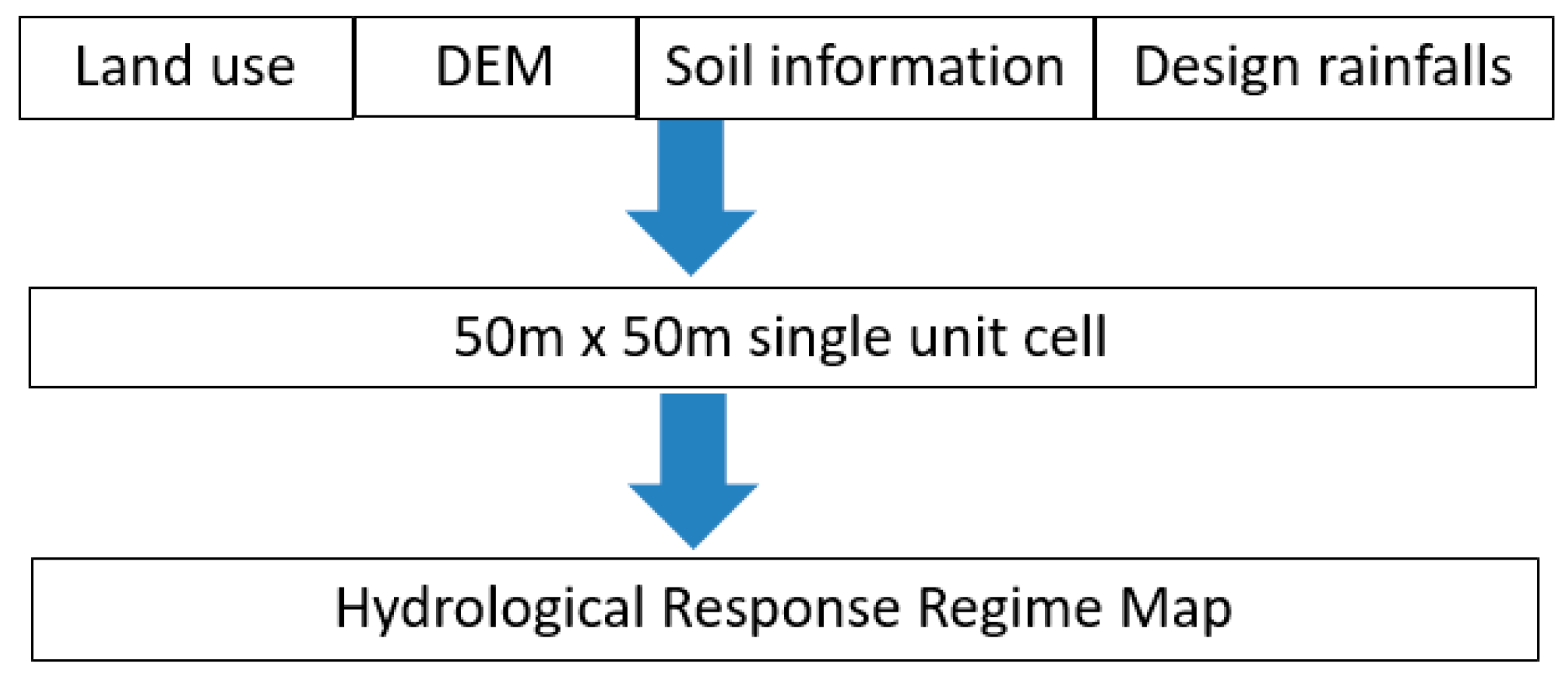


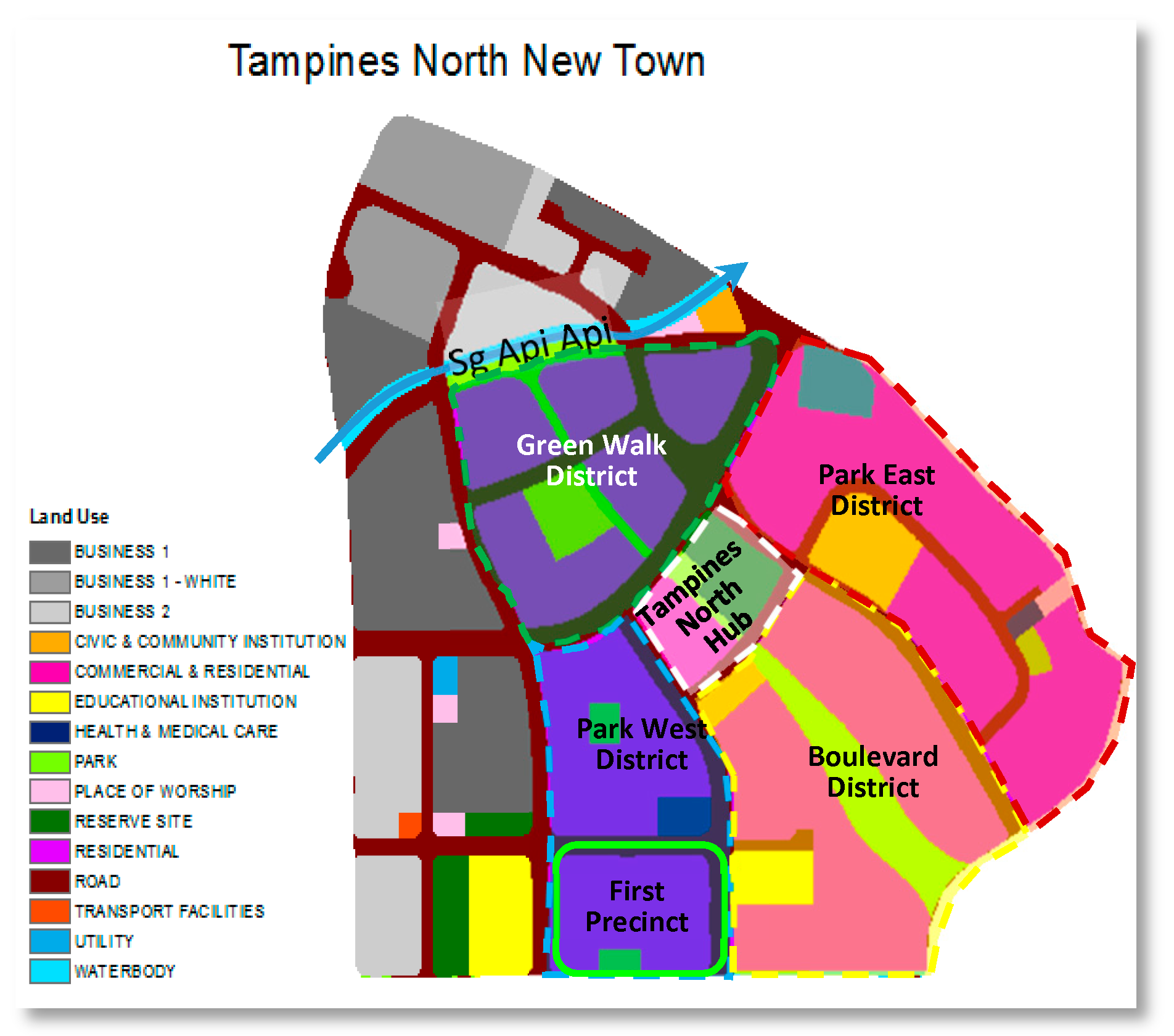


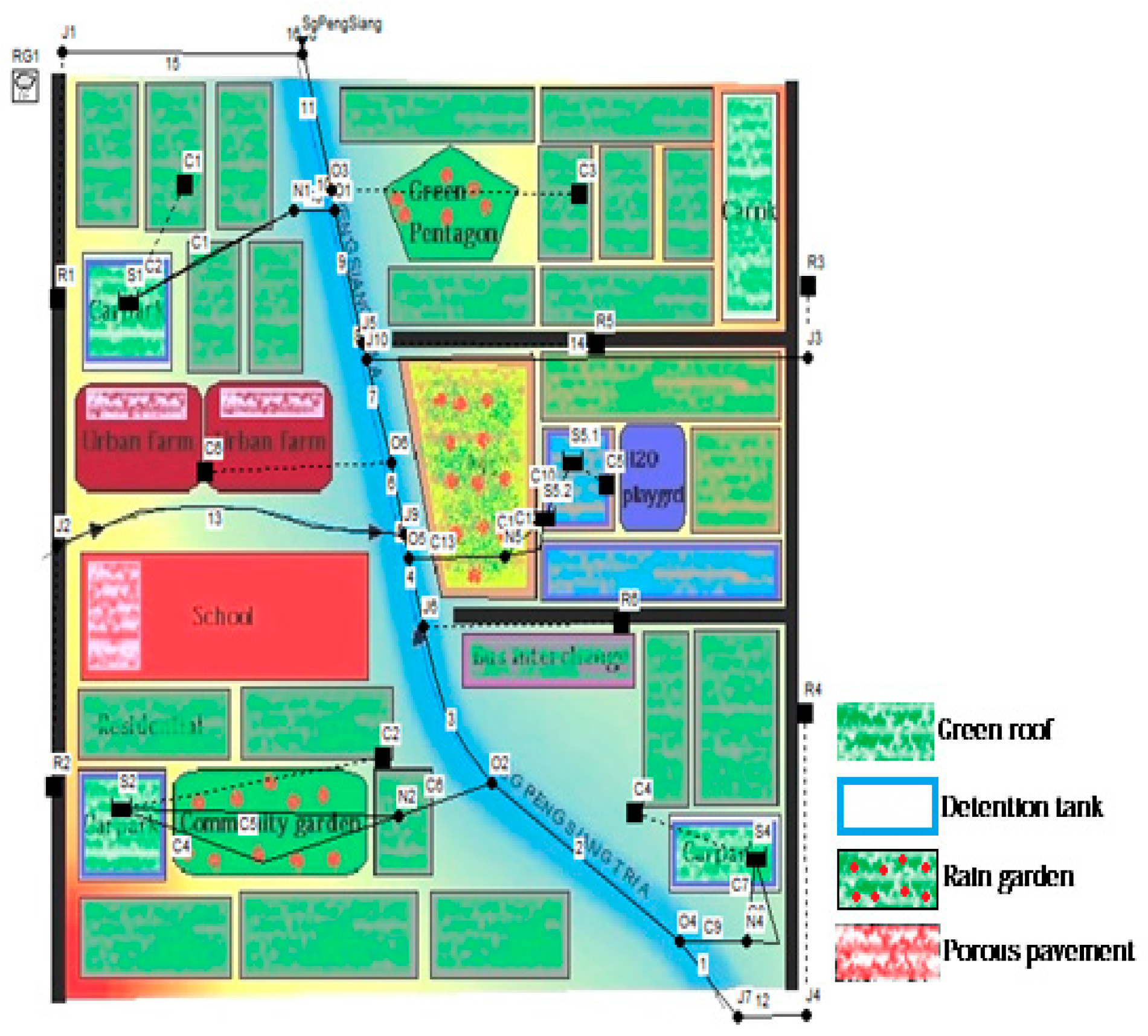
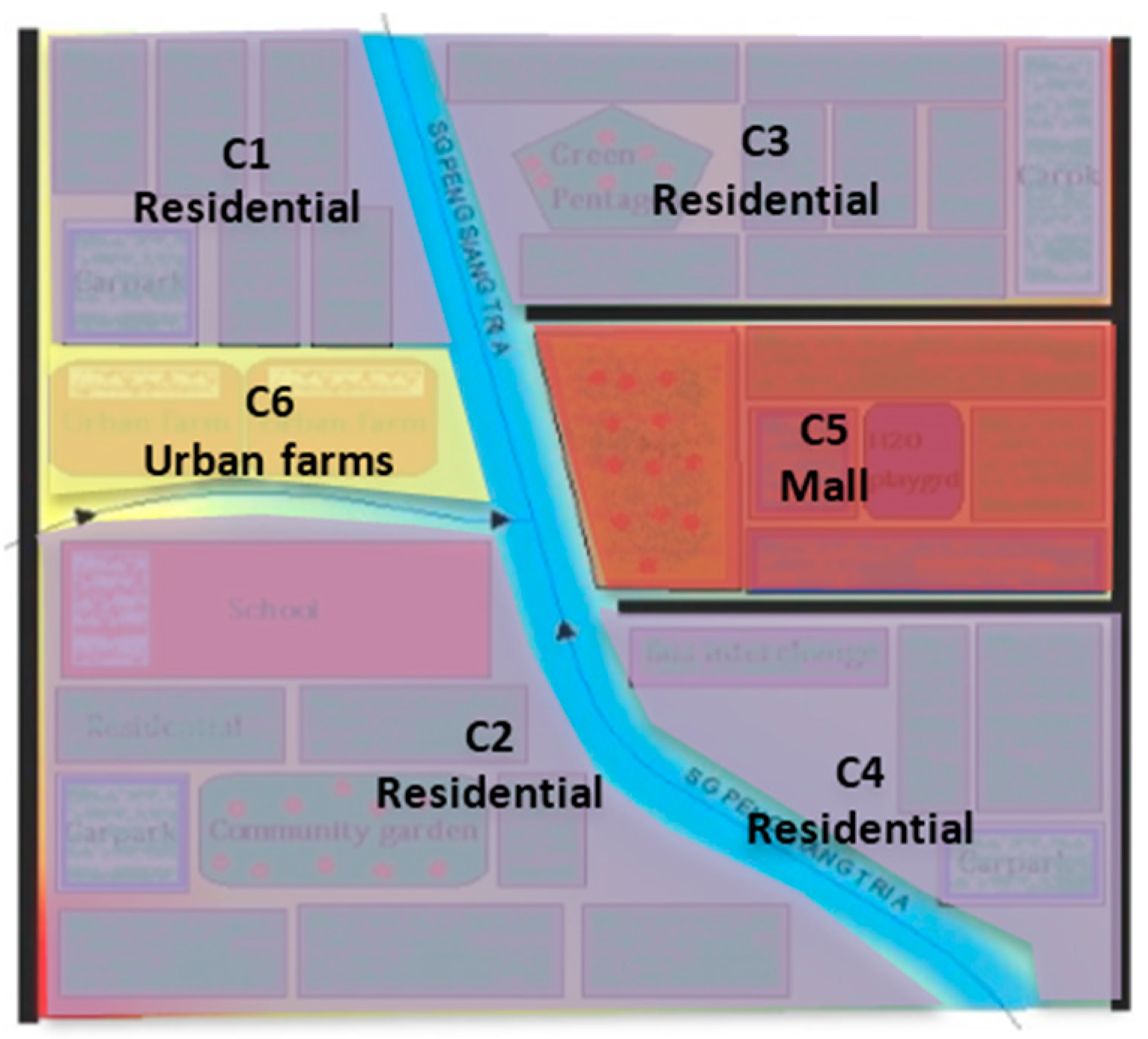
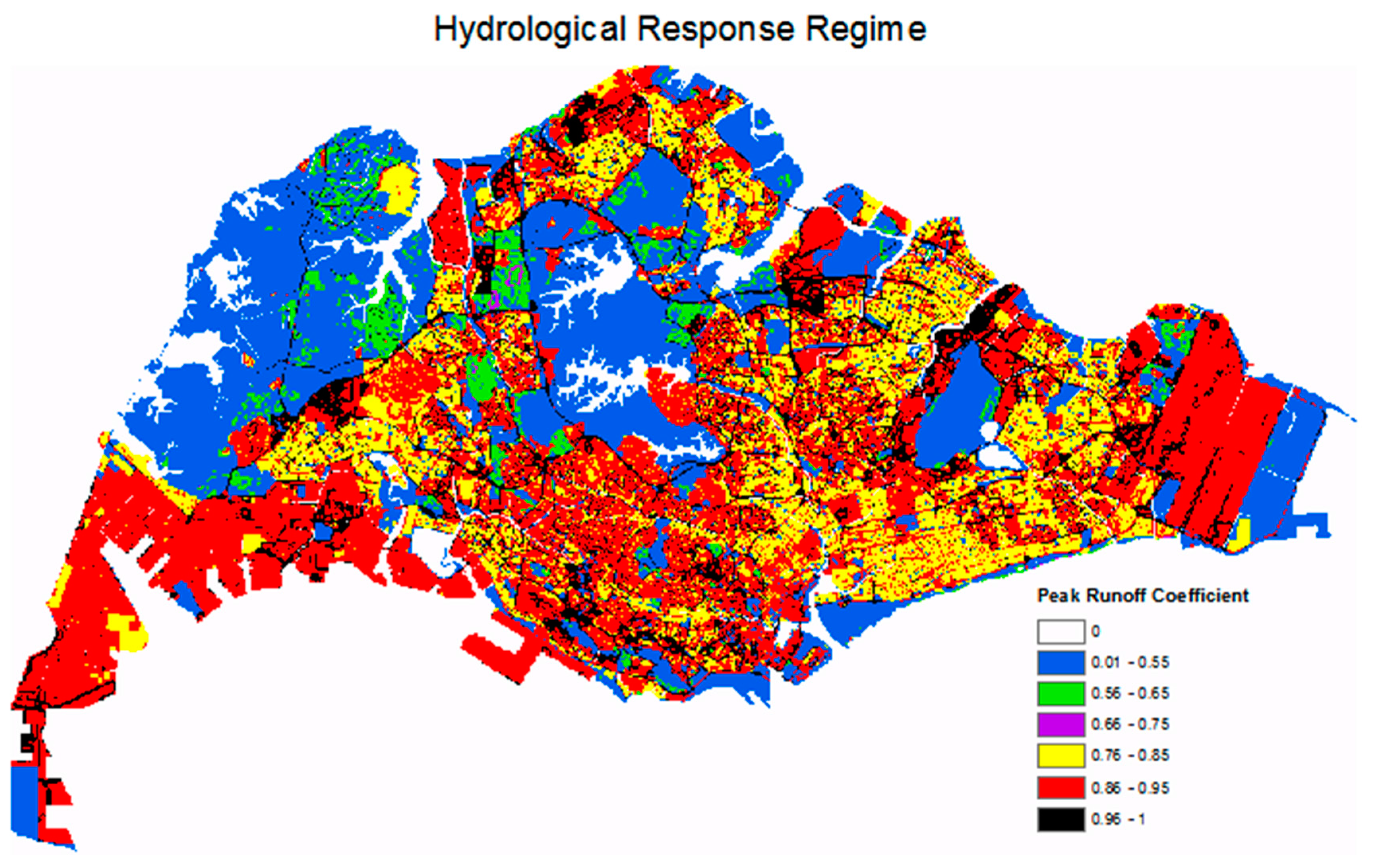
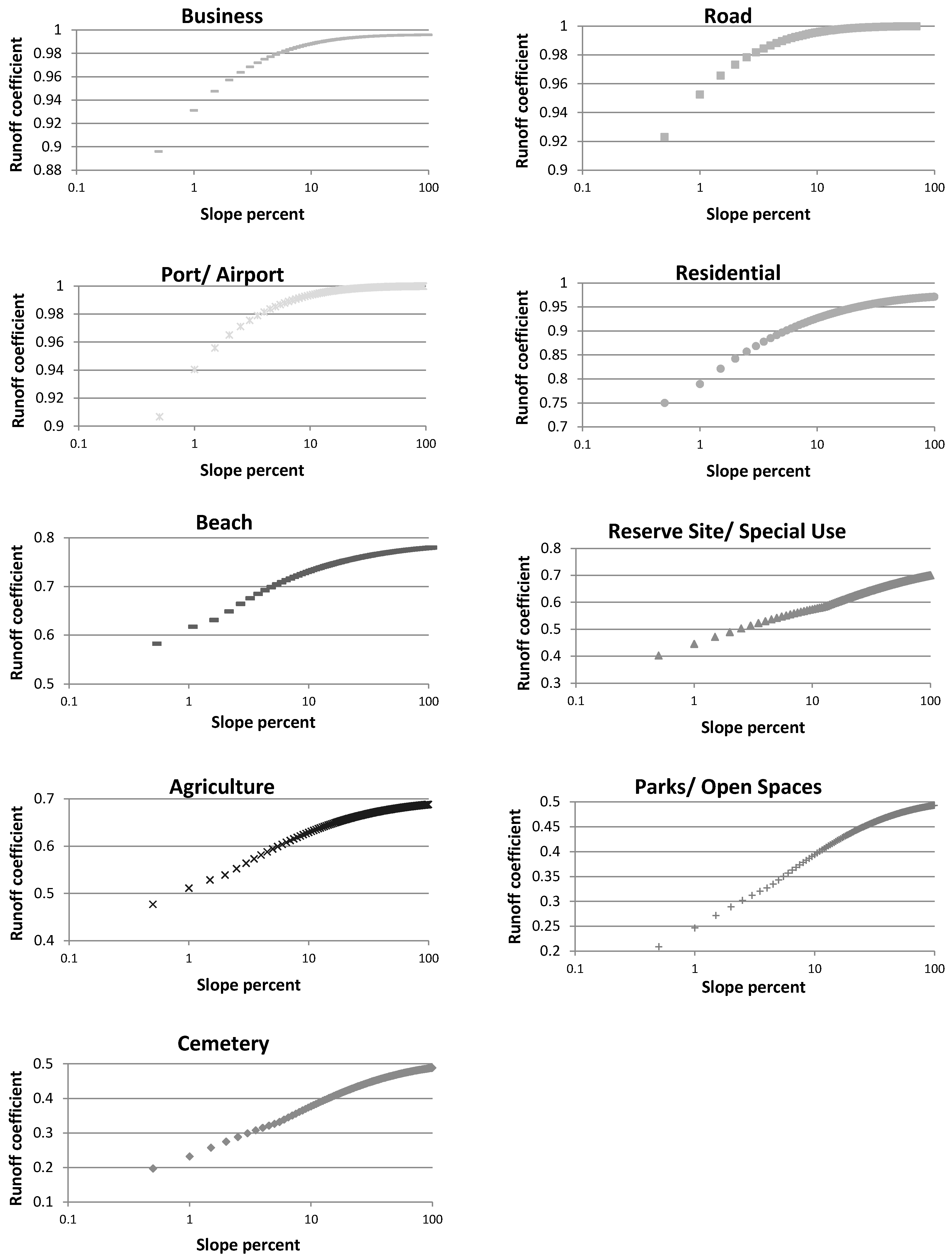
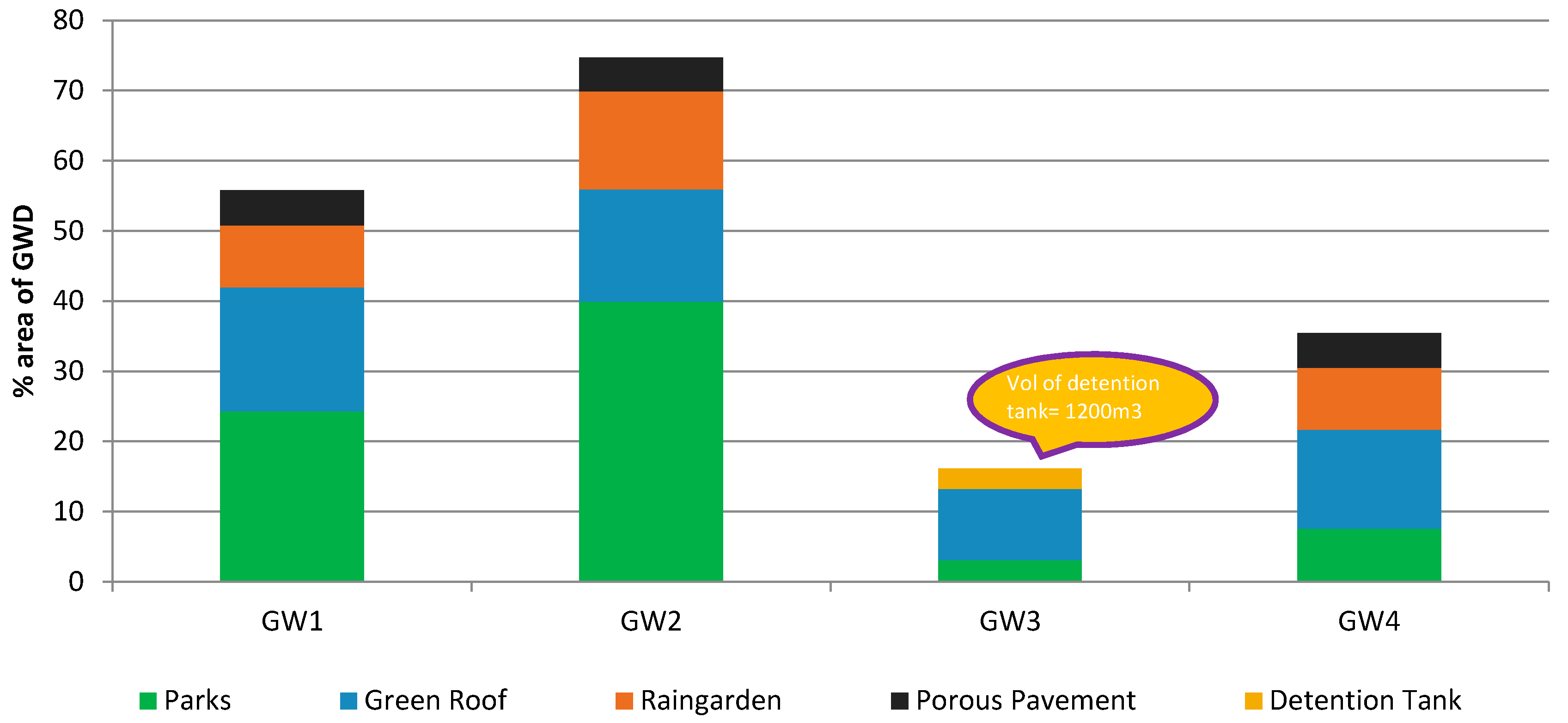

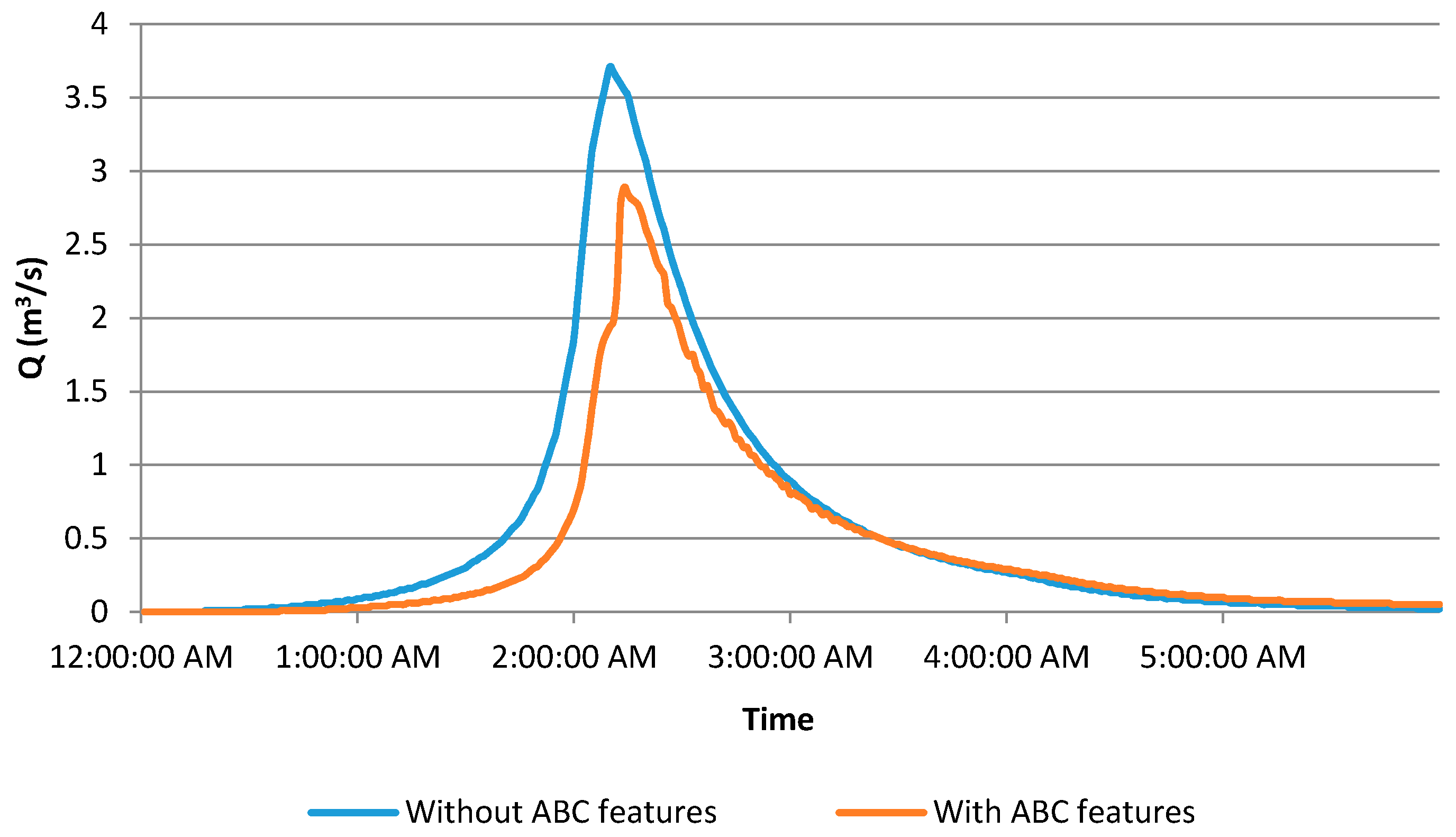
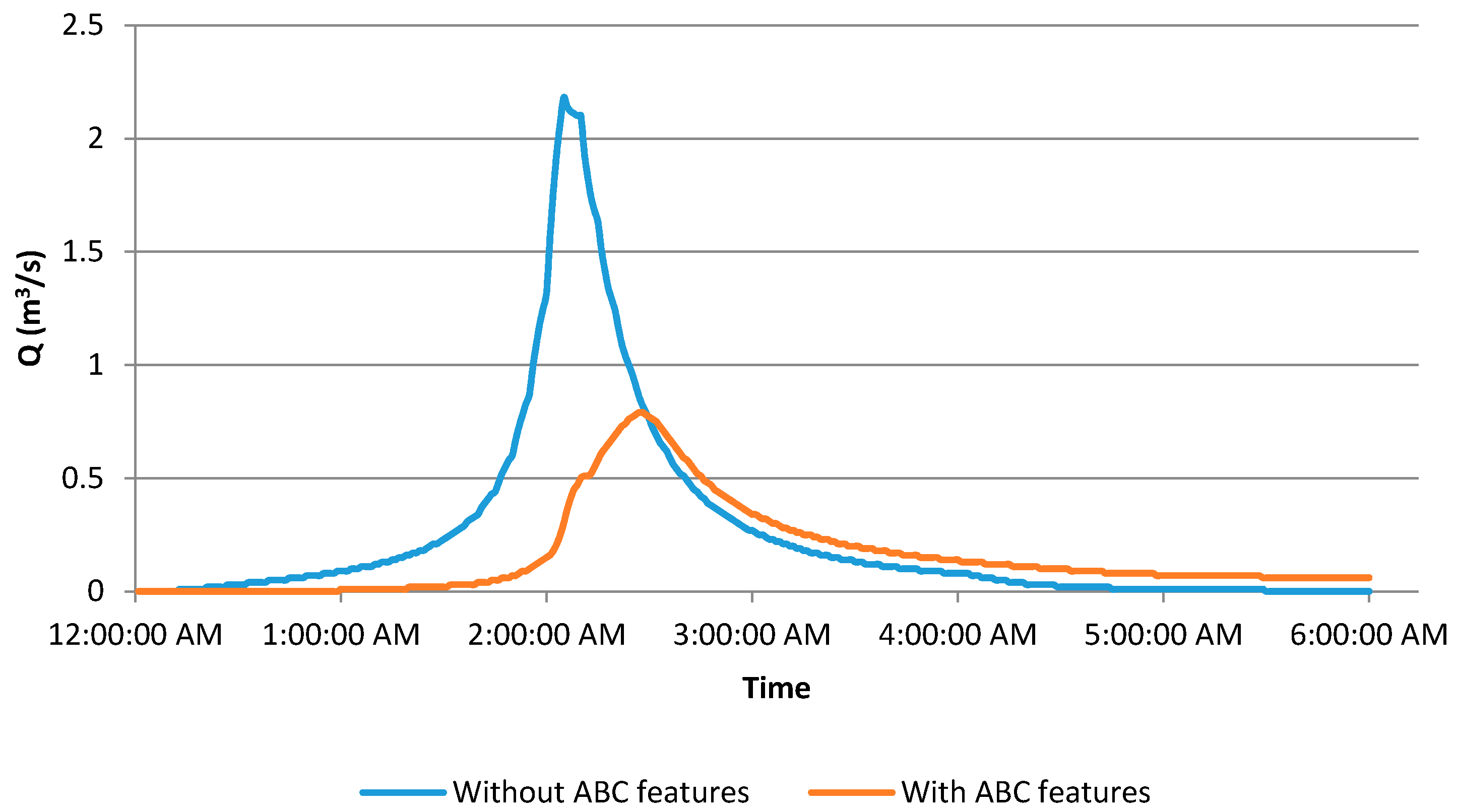

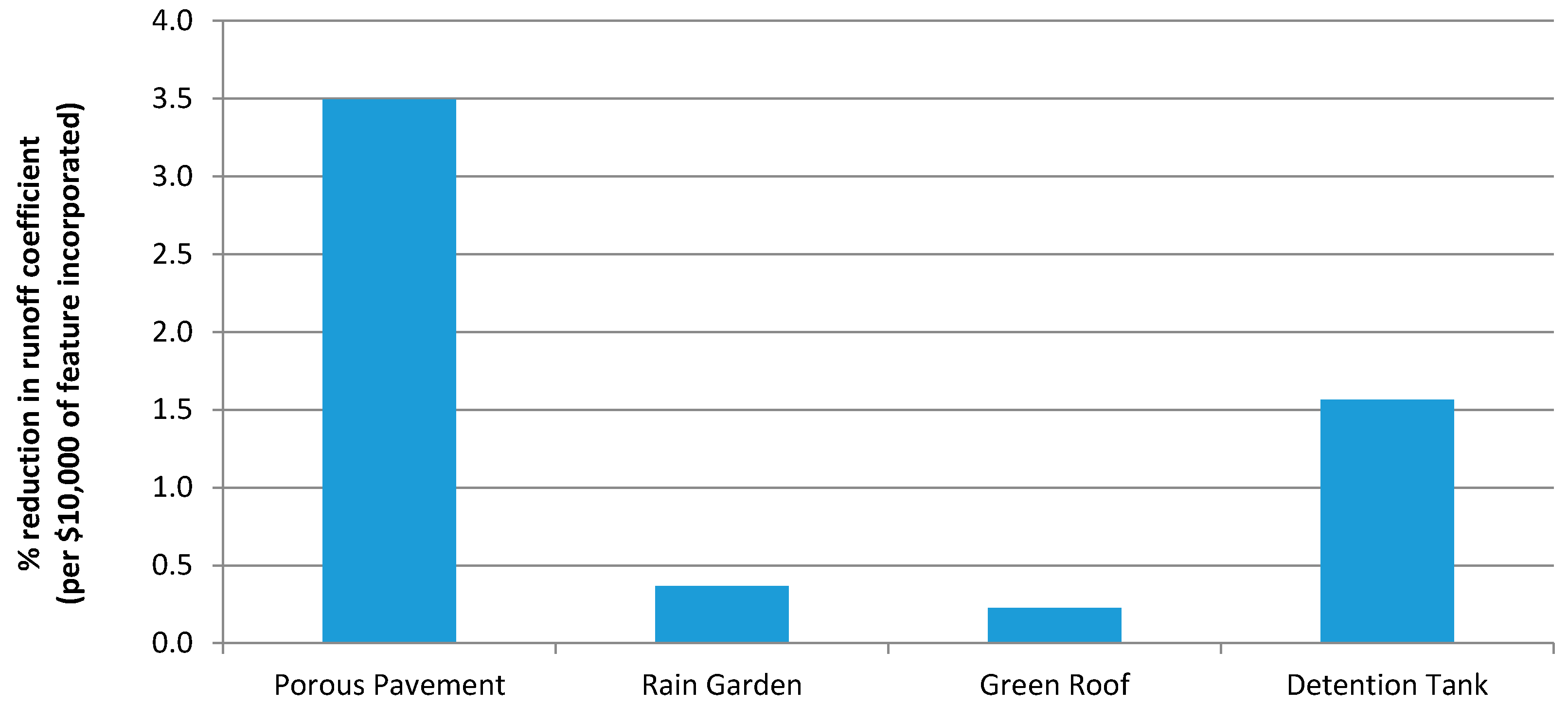
| Characteristics of Catchment When Fully Developed | Runoff Coefficient (C) |
|---|---|
| Roads, highways, airport runways, paved areas | 1.00 |
| Urban areas fully and closely built up | 0.90 |
| Residential/industrial areas densely built up | 0.80 |
| Residential/industrial areas not densely built up | 0.65 |
| Rural areas with fish ponds and vegetable gardens | 0.45 |
| Road | Port/Airport | Business | Residential | Beach | Agriculture | Reserve Site/Special Use | Parks/Open Spaces | Cemetery | |||||||||
|---|---|---|---|---|---|---|---|---|---|---|---|---|---|---|---|---|---|
| Slope % | C | Slope % | C | Slope % | C | Slope % | C | Slope % | C | Slope % | C | Slope % | C | Slope % | C | Slope % | C |
| 0 to 0.5 | 0.92 | 0 to 0.5 | 0.91 | 0 to 0.5 | 0.90 | 0 to 0.5 | 0.75 | 0 to 0.5 | 0.58 | 0 to 0.5 | 0.48 | 0 to 0.5 | 0.40 | 0 to 0.5 | 0.21 | 0 to 0.5 | 0.20 |
| 0.5 to 1 | 0.95 | 0.5 to 1 | 0.94 | 0.5 to 1 | 0.93 | 0.5 to 1 | 0.79 | 0.5 to 1 | 0.62 | 0.5 to 1 | 0.51 | 0.5 to 1 | 0.45 | 0.5 to 1 | 0.25 | 0.5 to 1 | 0.23 |
| 1 to 2 | 0.97 | 1 to 1.5 | 0.96 | 1 to 1.5 | 0.95 | 1 to 1.5 | 0.82 | 1 to 1.5 | 0.63 | 1 to 1.5 | 0.53 | 1 to 1.5 | 0.47 | 1 to 1.5 | 0.27 | 1 to 1.5 | 0.26 |
| 2 to 3.5 | 0.98 | 1.5 to 2.5 | 0.97 | 1.5 to 2.5 | 0.96 | 1.5 to 2 | 0.84 | 1.5 to 2 | 0.65 | 1.5 to 2 | 0.54 | 1.5 to 2 | 0.49 | 1.5 to 2 | 0.29 | 1.5 to 2 | 0.27 |
| 3.5 to 8 | 0.99 | 2.5 to 4.5 | 0.98 | 2.5 to 4 | 0.97 | 2 to 2.5 | 0.86 | 2 to 2.5 | 0.66 | 2 to 2.5 | 0.55 | 2 to 2.5 | 0.50 | 2 to 2.5 | 0.30 | 2 to 2.5 | 0.29 |
| 8 to 100 | 1.00 | 4.5 to 10 | 0.99 | 4 to 7 | 0.98 | 2.5 to 3 | 0.87 | 2.5 to 3.5 | 0.68 | 2.5 to 3 | 0.56 | 2.5 to 3 | 0.51 | 2.5 to 3 | 0.31 | 2.5 to 3 | 0.30 |
| 10 to 100 | 1 | 7 to 35 | 0.99 | 3 to 3.5 | 0.88 | 3.5 to 4 | 0.69 | 3 to 3.5 | 0.57 | 3 to 3.5 | 0.52 | 3 to 3.5 | 0.32 | 3 to 4 | 0.31 | ||
| 35 to 100 | 1 | 3.5 to 4.5 | 0.89 | 4 to 5 | 0.70 | 3.5 to 4 | 0.58 | 3.5 to 4 | 0.53 | 3.5 to 4.5 | 0.33 | 4 to 4.5 | 0.32 | ||||
| 4.5 to 5 | 0.90 | 5 to 6 | 0.71 | 4 to 5 | 0.59 | 4 to 5 | 0.54 | 4.5 to 5 | 0.34 | 4.5 to 5 | 0.33 | ||||||
| 5 to 7 | 0.91 | 6 to 7 | 0.72 | 5 to 6 | 0.60 | 5 to 6 | 0.55 | 5 to 6 | 0.36 | 5 to 6 | 0.34 | ||||||
| 7 to 9 | 0.92 | 7 to 10 | 0.73 | 6 to 7 | 0.61 | 6 to 7 | 0.56 | 6 to 7 | 0.37 | 6 to 7 | 0.35 | ||||||
| 9 to 10 | 0.93 | 10 to 20 | 0.75 | 7 to 9 | 0.62 | 7 to 10 | 0.57 | 7 to 8 | 0.38 | 7 to 8 | 0.36 | ||||||
| 10 to 15 | 0.94 | 20 to 30 | 0.76 | 9 to 10 | 0.63 | 10 to 15 | 0.60 | 8 to 10 | 0.39 | 8 to 9 | 0.37 | ||||||
| 15 to 25 | 0.95 | 30 to 50 | 0.77 | 10 to 15 | 0.65 | 15 to 20 | 0.62 | 10 to 15 | 0.42 | 9 to 10 | 0.38 | ||||||
| 25 to 50 | 0.96 | 50 to 100 | 0.78 | 15 to 25 | 0.66 | 20 to 25 | 0.63 | 15 to 20 | 0.44 | 10 to 15 | 0.41 | ||||||
| 50 to 100 | 0.97 | 25 to 40 | 0.67 | 25 to 30 | 0.64 | 20 to 25 | 0.45 | 15 to 20 | 0.42 | ||||||||
| 40 to 50 | 0.68 | 30 to 35 | 0.65 | 25 to 35 | 0.46 | 20 to 25 | 0.44 | ||||||||||
| 50 to 100 | 0.69 | 35 to 40 | 0.66 | 35 to 40 | 0.47 | 25 to 35 | 0.45 | ||||||||||
| 40 to 50 | 0.67 | 40 to 50 | 0.48 | 35 to 40 | 0.46 | ||||||||||||
| 50 to 100 | 0.70 | 50 to 100 | 0.49 | 40 to 50 | 0.47 | ||||||||||||
| 50 to 100 | 0.49 | ||||||||||||||||
| Subcatchment ID | Area of Subcatchment (ha) | Initial C Value | Area of Green Roof (% Area of Subcatchment) | % Reduction in C Values (Green Roofs) | Area of Rain Gardens (% Area of Subcatchment) | % Reduction in C Values (Rain Gardens) | Area of Porous Pavement (% Area of Subcatchment) | % Reduction in C Values (Porous Pavements) | Area of Detention Tanks (% Area of Subcatchment) | % Reduction in C Values (Detention Tanks) |
|---|---|---|---|---|---|---|---|---|---|---|
| GW1 | 3.4 | 0.67 | 17.7 | 3 | 8.8 | 9.2 | 5 | 5.1 | - | - |
| GW2 | 2.5 | 0.72 | 16 | 4.2 | 14 | 13 | 4.8 | 6.7 | - | - |
| GW3 | 6.9 | 0.60 | 10.1 | 0 | 0 | 0 | 0 | 0 | 2.9 (1200 m3) | 8.3 |
| GW4 | 2.83 | 0.66 | 14.1 | 3 | 8.83 | 7.8 | 5 | 6.8 | - | - |
| C1 | 1.01 | 0.9 | 39.6 | 8.9 | 5 | 8.9 | 3 | 3.7 | 2.8 (190 m3) | 38.9 |
| C2 | 3 | 0.9 | 13.3 | 17.8 | 10 | 10.8 | 5 | 4.5 | 2.7 (560 m3) | 11.1 |
| C3 | 2 | 0.9 | 45 | 10 | 30 | 32 | - | - | - | - |
| C4 | 0.88 | 0.9 | 45.5 | 7.8 | 2.8 | 4.8 | 2.3 | 5.1 | 3.8 (165 m3) | 32 |
| C5 | 1.52 | 0.9 | 13.2 | 0 | 13.2 | 13.8 | 3.3 | 3.7 | 16.5 (175 m3) (240 m3—water roof) | 30.8 |
| C6 | 0.65 | 0.9 | - | - | - | - | 29.2 | 46.7 | - | - |
© 2017 by the authors. Licensee MDPI, Basel, Switzerland. This article is an open access article distributed under the terms and conditions of the Creative Commons Attribution (CC BY) license (http://creativecommons.org/licenses/by/4.0/).
Share and Cite
Goh, X.P.; Radhakrishnan, M.; Zevenbergen, C.; Pathirana, A. Effectiveness of Runoff Control Legislation and Active, Beautiful, Clean (ABC) Waters Design Features in Singapore. Water 2017, 9, 627. https://doi.org/10.3390/w9080627
Goh XP, Radhakrishnan M, Zevenbergen C, Pathirana A. Effectiveness of Runoff Control Legislation and Active, Beautiful, Clean (ABC) Waters Design Features in Singapore. Water. 2017; 9(8):627. https://doi.org/10.3390/w9080627
Chicago/Turabian StyleGoh, Xue Ping, Mohanasundar Radhakrishnan, Chris Zevenbergen, and Assela Pathirana. 2017. "Effectiveness of Runoff Control Legislation and Active, Beautiful, Clean (ABC) Waters Design Features in Singapore" Water 9, no. 8: 627. https://doi.org/10.3390/w9080627





